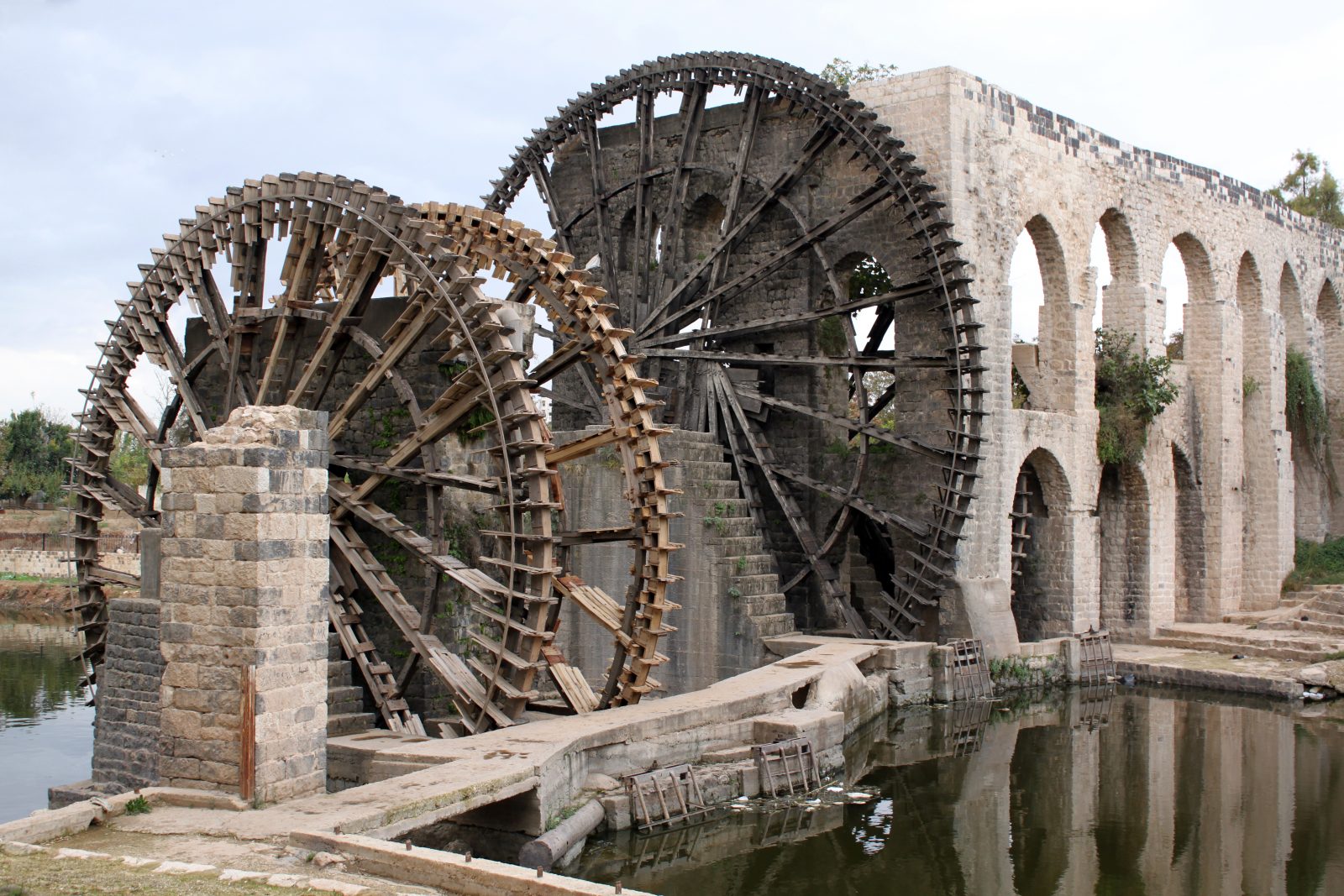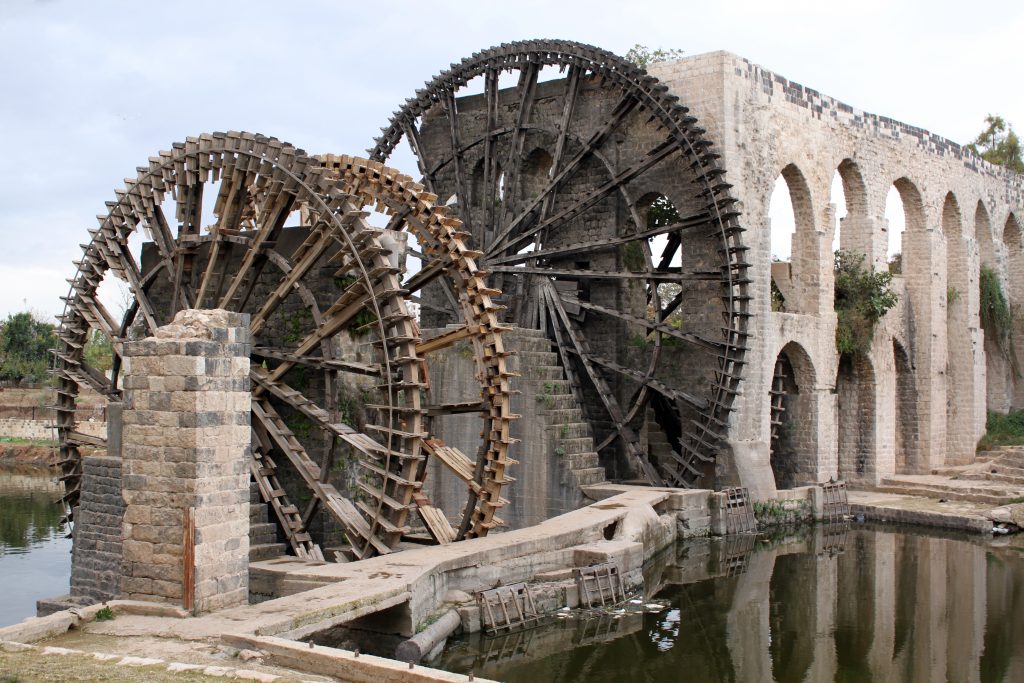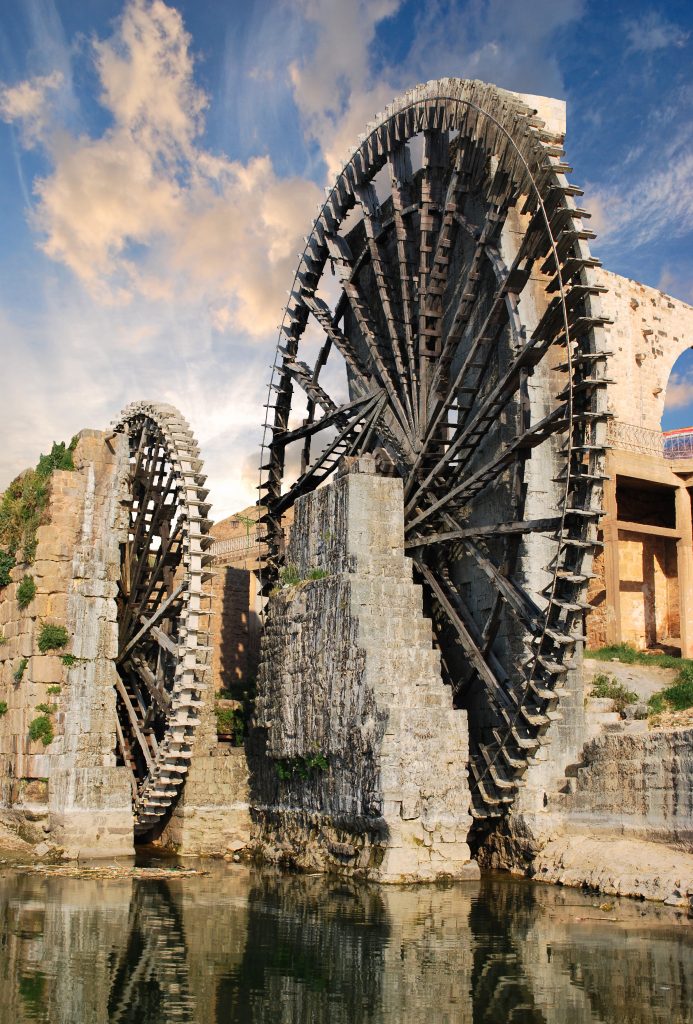Water Wheels of Life


The water wheels of Hama, Syria, are among the oldest, and widely considered most beautiful, existing devices of their kind. For nearly two millennium, the massive wheels have provided water to a barren land, supporting settlements and ultimately giving rise to civilization and culture.
By Eric Herman
They’re called the Norias of Hama. Made of wood with intricate geometric designs, the wheels stand as what many historians believe to be the largest and most elaborate water wheels ever built. Located in Syria, these wonders of antiquity are unfamiliar to most people in the West, but to locals they remain emblems of ingenuity and survival.
The massive wheels line the Orontes River, which runs by Hama, and have been essential to survival and civilized development in the region for centuries. The term “noria” means “wheel of pots.” They have been essential to survival and civilized development for many centuries and should rightfully be considered in the same category of pre-industrial aquatic design as the Roman aqueducts or Archimedes screw.
The concept was simple: the river’s current turned the wheels, as the wooden buckets on the wheels collected water from the river, and then deposited it into aqueducts, canals or other channeling systems at the summit of the wheel’s rotation, enabling distribution for irrigation at higher elevations.
Gravity moved the water along the aqueducts to its destination in various parts of the town including mosques and cisterns plumbed to homes. Water was also directed to the irrigation of gardens and crops.
The largest water wheel, Na’ura al-Muhammadiya, built 1,361 CE, measures around 20 meters in diameter. It provided water for the Great Mosque via an aqueduct with 32 arches.
Although no one knows when the first water wheels were built or who was originally responsible for their design and construction, a Byzantine mosaic from the site of Apamea, not far from Hama, depicts a water wheel and dates from 469 CE.
According to the medieval writer Yakut (ca.1225), there were several water wheels in Hama already around 884 CE. However, none of the surviving water wheels in Hama can be dated earlier than the Ayyubid Dynasty founded by Saladin ca.1171.
Around 1900 there were more than 50 water wheels in Hama. By the 1930s when a major Danish archeological expedition studied the region, the number of noria had dwindled to around 20.
The town of Hama itself has a fascinating history. The mound at Hama lies along the banks of the Orontes River, the largest river in western Syria. The Orontes rises in Libanon and flows past the cities of Homs and Hama in Syria and empties into the Mediterranean at the town of Antakya (ancient Antioch) in Turkey.
It is neither navigable nor very useful for irrigation, which is why the noria were necessary. The Orontes Valley at Hama forms a border zone between the eastern desert of Syria and the mountains to the west, which block access to the Mediterranen coast. Hama is also on the edge of the dry farming zone. While there is often ample annual rainfall to support agriculture without irrigation: farming in the area can be badly impacted by frequent drought conditions.
The river has always provided water for gardens along its banks, either with water wheels or other means.
In 2002 there were still 17 wheels remaining in the town, all of which had gone out of use by 2009. Nonetheless they remain a testament to hydraulic ingenuity, and a popular tourist attraction.
Opening image by Valerie Shamin | Shutterstock, lower image by Waj | Shutterstock










